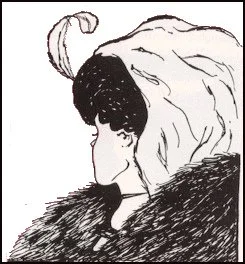Mary Dwyer: Forgiveness
"Forgiveness is not forgetting, not condoning, not a form of absolution, not a pretense, not a once and for all decision, and not a sign of weakness but of strength."—Mary Dwyer, One Day Retreat of Contemplative Outreach, Learning to Forgive, February 10, 2018, St. Mark's.
At a forgiveness workshop with Mary Dwyer from Contemplative Outreach, Ltd., at St. Mark's, we learned some basics to start the journey of forgiveness. She reminds us that forgiveness is the only conditional part of the Lord's Prayer, "forgive our sins, as we forgive others."
Reconciliation involves both parties. Forgiveness involves only one party.
Mary cautioned us about forgiving too soon.
She used the process from Fr. William A. Meninger's book, The Process of Forgiveness. The first stage of beginning to forgive involves claiming the hurt, often by writing about it.
Telling our story is also a big part of Bishop Tutu's book, The Book of Forgiving. In the second stage of healing, we feel guilty that maybe we did something wrong for the harm to happen. Here, we are healed by comforting our inner child.
In the third stage, we see ourselves as the victim. Mary gave examples of how so many people get stuck in this stage. Their whole life centers around some hurt many years ago. Support groups help in this stage, as we see we are not the only ones who have been harmed.
In the fourth stage, we become angry about the hurt. Anger brings with it a tremendous energy and clarity. If we can transform that energy, we can start healing as we release this energy and become whole again.
What helps me the most is knowing that the person who has harmed me is still hurting me as long as I cannot forgive them.
Mary then described a process of active imagination with God and the person who has harmed us called the Forgiveness Prayer. After a period of Centering Prayer, we imagine our own sacred space with God very close to us. She imagines she is sitting in God's lap. My sacred space would be sitting on the white sandy beach by the ocean, watching the waves come gently in as the seagulls fly in and out at the water's edge. We then invite someone who has harmed us to come into our space. We tell them all that they have done to hurt us. Then we ask them if we have hurt them, and then ask them for forgiveness.
Sometimes, having a picture of the person who harmed us may help us speak to them. This is not a one-time event but may require many encounters. The Forgiveness Prayer is helpful for me when the person who harmed me refuses to talk about it. The Prayer allows us to speak to that person in a safe place where we cannot be injured again and acknowledge our mistakes.
Mary also recommends praying daily for the person who has harmed us until we are ready to forgive.
another sacred space




